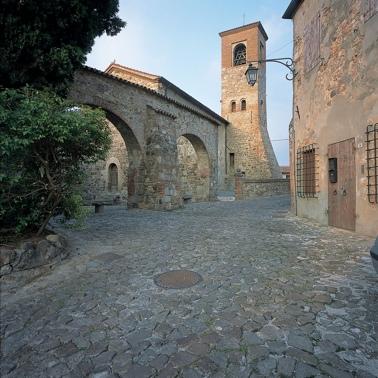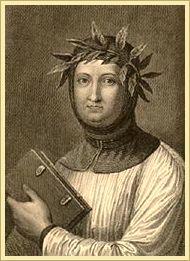 Time seems to have stopped at Arquà Petrarca, the little town in the Euganean Hills that, more than any other, has preserved unchanged the charm of a medieval village. Its name is perhaps derived from Arquata montium, meaning "ring of mountains", but its notoriety is due to the eternal fame of Francesco Petrarch, the poet who spent the last years of his life here.
Thanks to its favorable position, Arquà has been inhabited since the Bronze Age, as evidenced by the retrieval of foundation piles in the Costa Lake, but it grew mainly under the rule of the Paduan Lord of the da Carrara family, and under the rule of Venice.
Facing the fascinating Piazza Roma are the 15th-century Venetian-Gothic Contarini Palace, later called Naccari, and a 14th century building with a typical restaurant named Laura, after the ideal woman of Petrarch.
 The view from the square is crowned by the Church of Santa Maria, built little after the year 1000, later enlarged and enriched with a pictorial palimpsest in styles varying from Byzantine to Giotto's. Of special interest is the painting "The Ascension" by Palma il Giovane. In the middle of the church square there lays the tomb of Petrarch, who died here in 1374 in his house, which is open to visitors. The tomb is a coffer in Verona red marble, made six years after the death of the poet. The street by the church square contains a fountain with washing troughs, which is called "Petrarch's fountain" because its construction was attributed to him, even though its make is from the 1200s. Beside it are two period houses, one in gothic style and the other from the 15th century with a hanging garden. Leaving the square and walking along via Roma, one can see a Romanesque house with Gothic and 15th century additions, and a little building, which used to serve as a hospital for beggars in the 13th century.
At the curve, after another 13th-century house, is Villa Alessi, once the headquarters of the Bishops of Padua when they came here for pastoral visits. Today, it is used for events and concerts. At San Marco Square is the Oratorio della SS. Trinità with the Loggia dei Vicari, decorated with the coats of arms of the aristocratic chancellors of Padua who administered the city on behalf of the Republic of Venice.
Behind a little church with a sloping roof, which holds a painting by Palma il Giovane and other frescos, the begins the characteristic climb to the gardens of Monte Castello. Back to the Loggia, one can see a house restored in the 1500s with a beautiful balcony overlooking the surrounding mountains. It was inhabited two centuries before the renovation works by the renown physician Jacopo d'Arquà. Past the column of the Venetian Lion (1612) on via Valleselle is the house inhabited by Petrarch from 1370 to 1374.
Embellished in the 1500s with a small loggia and frescos inspired at Petratch's work Canzoniere, the original aspect of the house was restored between 1909 and 1923. It currently holds a permanent exhibition of works and relics of the poet.
|